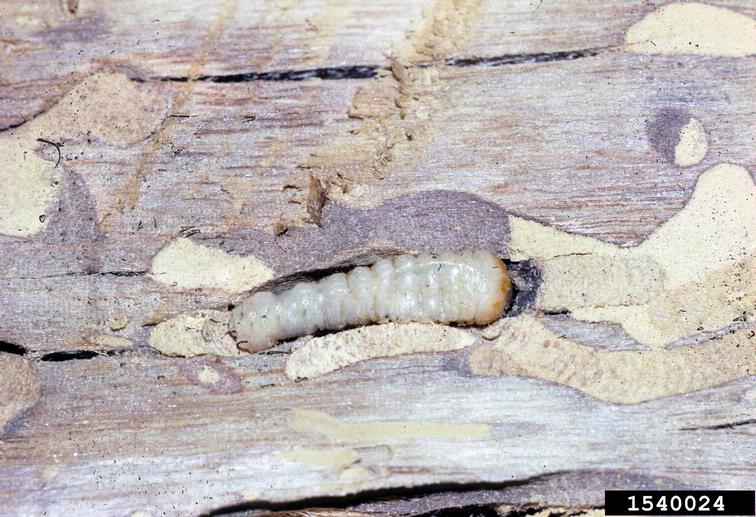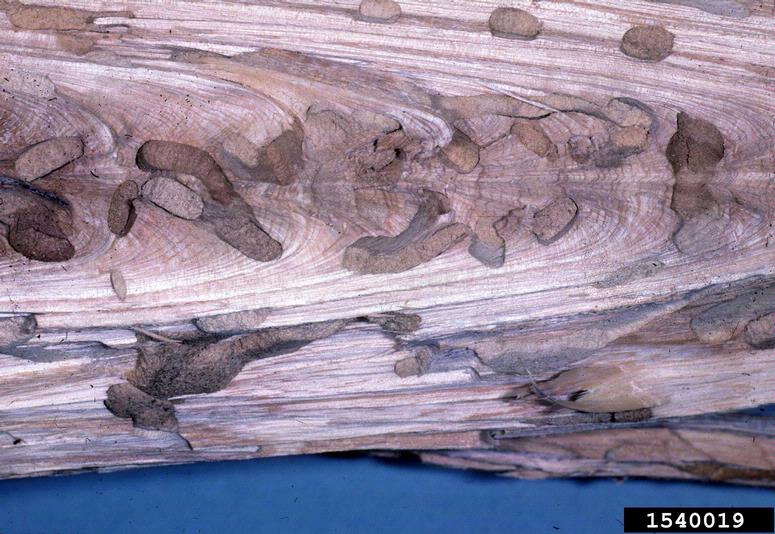Integrated Pest Management
Banded Ash Borer
Neoclytus caprea
Pest Description
- adults: 1/2 – 1 inch; black to dark brown beetles with yellow markings on the wings
- larvae: up to 1 1/4 inches long; white grubs with or without legs
Host Plants, Diet & Damage
- ash, hickory, elm, mesquite, white oak
- larvae feed on phloem and sapwood under the bark
- attack primarily unhealthy or damaged trees
- unhealthy trees or individual branches may die from continued infestation
- typically considered a firewood pest when adults emerge from cut logs inside homes
- damage could be confused with that of emerald ash borer
Biology, Life Cycle & Damaging Life Stage
- overwinter as adults under the bark
- adults emerge in spring and deposit eggs on host bark
- larvae feed under the bark in the phloem and later in the sapwood
- larvae pupate in the fall
- one generation per year
- larvae are the damaging stage
IPM Recommendations
- Manage trees to improve or maintain overall health.
- Prune infested wood/branches.
- On trees with ongoing infestations, apply an insecticide (carbamate; pyrethroid) to the bark on the trunk and large scaffold branches in spring prior to egg laying.
- For firewood, allow insects to complete their life cycle outside before bringing the wood inside.
- Beetles will not infest structural wood, furniture, etc., and are only a nuisance indoors.




